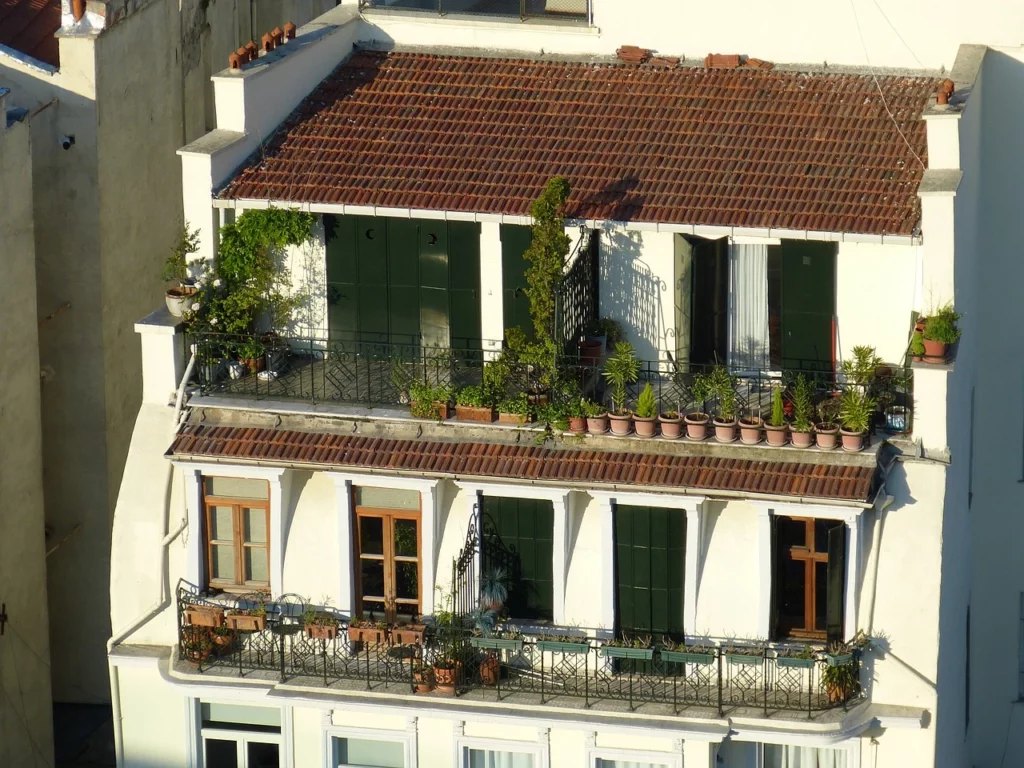Gardening in the city comes with its own set of challenges. Not all plants do well with the sometimes difficult environmental conditions. Low light, little water, high heat or limited space require careful selection of your crops. In this article we want to give you an overview of a few candidates that defy (almost) all adversities.
In the last article of the series “Urban Gardening” we presented some forms of urban gardening. This time, we will focus on the crops that fit well with the different forms. After all, what thrives well in a community garden bed may not feel so comfortable on your balcony. Let’s go:
Contents
The balcony garden: between sun and shade
Balconies and, to an even greater extent, roof terraces, are sometimes the most extreme locations for plants. On south-facing balconies, it often gets tropically hot in the summer and thus very dry. On my balcony, for example, it regularly exceeded 40° this summer. Potted plants dry out particularly quickly because they cannot help themselves to the water reserves in the soil. If a balcony faces north or is located in an inner courtyard, it can quickly become very gloomy and many plants no longer have enough light to grow.
For south-facing balconies, sun-loving plants are – logically – recommended. All nightshade plants (tomato, bell pepper, chili, eggplant, etc.) thrive well here. Cucumbers and beans also thrive in the heat and offer a nice side benefit: if you run them up strings or sticks, they’ll offer you both privacy and sun protection. To give your plants a little buffer, you should give them the largest pots possible and use a substrate with expanded clay or perlite added. These materials have a high water-holding capacity and also store nutrients.
If your balcony is rather shady, you can grow mainly lettuce, spinach or chard there. But radishes and carrots also thrive in the shade. With chard, radishes and carrots you should make sure that the pot is deep enough – at least 30 cm. To spruce up your spice palette, you can also grow herbs on a shady balcony. Most herbs are quite undemanding when it comes to location, so basil, parsley, chives and co. still do relatively well in the shade.
The windowsill garden: little space, little light
On your windowsill, you’re limited primarily by space. Large pots usually do not fit here and the plants themselves should not be too expansive. Salads, herbs or microgreens are the obvious choice here. But small chili bushes also thrive on the windowsill if they get enough light. Another way to green your windowsill is to regrow vegetable scraps. This involves planting the “scraps” of vegetables that are capable of sprouting again, so they can be harvested even more often. Spring onions, for example, but also some lettuces are very suitable for this. How to regrow spring onions you can find out here.
Community and allotment gardens: unlimited possibilities
If you are in the fortunate position of having a piece of land available in the city on which you can garden, you are virtually unrestricted as far as crop choice is concerned. At least not in principle. Of course, even in a “real” garden you have to pay attention to the conditions of the site and choose crops with the appropriate requirements accordingly. But the possibilities are more diverse in a real garden bed, since many limitations that restrict you on the balcony or windowsill are no longer applicable. Here you can learn how to create your own vegetable garden.
I hope I was able to give you an idea of the most important criteria for the choice of crops for your urban garden and you got an idea of which plants you could grow at home.


